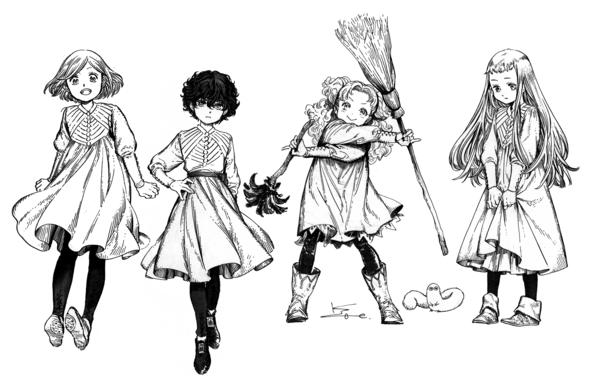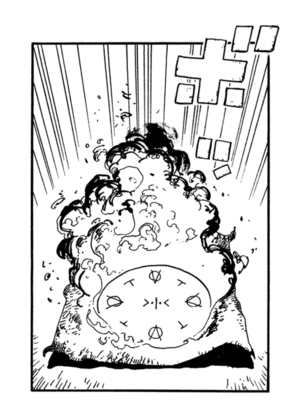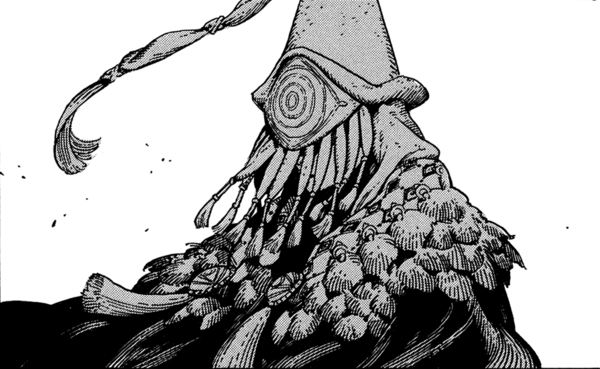The Magic of Kamome Shirahama's Witch Hat Atelier
Witch Hat Atelier follows four young witch disciples as they interact with an expansive world of magic and wonder. The award-winning[1] manga is undergirded by a very unique, visual, hard magic system[2] - with an aesthetic that seems to mostly be inspired by traditional fairy tales.
Spells are conjured by drawing glyphs using specially procured ink. Using the medium of drawn symbols creates conceptual boundaries for our creativity to work within, which means that after seeing a magical device for the first time, you can already start to imagine what kind of runes might be involved in making the device function. The reader also has previous experiences with the process of drawing, which make it possible to grasp what might make someone a skilled magician and how our main characters will improve over the course of the story. Such intuitiveness is hard to attain, and Witch Hat Atelier is one of the best examples I know.

The main cast of the story.
Early in the story we learn that conjuring spells was once commonplace, but a chain of conflicts and atrocities fueled by powerful magic led a consortium of witches to hide magic from the general public and perform a massive cultural purge. These witches - calling themselves the Witches' Assembly - instituted the Knights Moralis, a sect of witches tasked with protecting the secret and erasing the memory of people outside of the tight-knit community of already established magic practitioners.
The use of magic requires no special cosmic alignment at birth, so the only thing preventing civilians from practicing magic is essentially the Assembly's control over the supply of magic ink, and the knowledge of its very existence. They also enforce a ban on magic performed on human beings, effectively outlawing magic-assisted healing in the process. This is the central conflict of the story; is it ethical to rob people of their inherent magical ability, just to protect them from themselves?
Glyphs
All magic in this story stems from glyphs. When drawn properly, they affect the world in predictable and calculable ways for as long as the glyph remains unbroken. The most vital part of all magical glyphs is the unbroken ring encircling the whole. Most take advantage of this fact by carrying a notebook of unfinished glyphs, leaving only a tiny gap in the ring, that they may unleash at any moment by simply closing the circle. It is necessary for witches to hide their methods when drawing in front of uninitiated civilians, and the pre-drawn glyphs assist them in that as well.
The two other necessary parts of the glyph are the sigil in the middle, and one or several layers of keystones arranged in circles around the sigil. The properties of the glyph determine the effect, strength and quality of the magic produced. The shape of the sigil in the center of the glyph generally determines what element the magic will act upon, and the combination of keystones decide the effect, power and direction. Most of these elements can be mixed and matched at will to produce a nearly infinite range of magic. Some of the more advanced spells even contain several glyphs, and several layers of keystones.
As the story progresses we learn about new uses for these spells, as well as contraptions and trinkets powered by these effects. The people over at the Witch Atelier Wiki have compiled a list[3] of all the spells we have seen in the manga so far. It has never been explicitly stated, but it seems as though these symbols are discovered, not invented. They are somehow inherent to nature.

A fire-producing glyph.
Regarding sigils, there are of course the usual earth, air, water and fire - but also a number of more specialized signs. There seems to be no definitive set of sigils, since more are introduced all the time. Some of the more niche examples include light, crystal, and several different iterations of the air sigil. In some spells the sigil can be excluded, which seems to make the spell act upon any materials in its immediate surroundings.
At present[4] there are 26 documented keystones used in the manga. They dictate the form the conjured element will take, whether it will disperse, peacefully levitate above the glyph, or burst forth in a focused jet. In addition they also affect the direction and magnitude of the magic, depending on their absolute and relative size. If the keystones are bigger on the right side of the glyph, the magic will shoot to the left once the circle is closed. Hence, a good sense for proportions and a steady hand is key to becoming good at magic. Uneven and crooked lines will make the magic unstable and volatile.
Magical devices
The first magical device we are introduced to, immediately in chapter one, is a winged chariot pulled by a pair of winged destriers. However, it does not seem like these flying creatures are what makes the carriage itself levitate, since the undoing of the glyph under the floor of the carriage leaves it stranded in the country side. The world is littered with fantastical creatures, which are an obvious part of the fairy tale aesthetic. Few of them are overtly magical, just subtly unnatural.
Probably the most iconic contraptions are the so called Soaring Boots, which are used by virtually all witches. They make use of a common mechanism in magical devices, which is to make a broken circle whole when two surfaces meet. Half a glyph is drawn under each shoe, and thus, bringing the soles together propels the wearer forward. Many similar contraptions exist, and all witches seem to be craftsmen and inventors at some level.
Forbidden magic
As the antagonists(?) to the institutionalist and supposedly responsible Witches' Assembly, there is an organization called the Brimhats, named for the distinct brim around their pointy hats. We only see glimpses of these secretive witches, and when they appear on page, their faces are always veiled behind intricate masks. They oppose keeping magic hidden from the people, and covertly distribute magic items and tools to people - often putting them in mortal danger or maiming them in the process.
For some reason they have taken an interest to the main protagonist, and try to convert her by demonstrating their power, and trying to make her break the magical taboo of performing magic on human flesh.

Menacing depiction of a brimhat.
Conclusion
My favorite part of this particular magic system is the intuitiveness and the visual aspects. With relatively few building blocks, Kamome Shirahama has devised an intricate system that can produce almost any form of magic imaginable, and melded art and magic into a carefully crafted scheme, perfect for an extremely visual medium like manga.
This text focuses explicitly on the magic system of Witch Hat Atelier, but I feel obligated to add that the manga is in no way reliant on it as a gimmick. Even without the magic, the manga is an example of world-class art and slice of life storytelling. Not to mention the intricate and organic panelling, which is often used to highlight the magic on the page, lending it a completely new dimension.
Kamome Shirahama is simply a master of her craft.
Footnotes
[1]
Witch Hat Atelier won Best Manga at the Harvey Awards 2020.
[2]
A nice explanation of different types of magic systems.
[3]
A list of 47 identified spells at the unofficial wiki.
[4]
Latest translated chapter at the time of writing is chapter 47.